|
|
|
Книги издательства «Penguin Group»

|
While Wall Street was busy creating the biggest credit bubble of all time, a few renegade investors saw it was about to burst, bet against the banking system — and made a fortune. This book tells the story of the misfits, mavericks and geniuses who, against all odds, made the greatest financial killing in history. |

|
Here for the first time in one volume are all the basic and revolutionary concepts on exercise, training principles, contest preparation, diet and nutrition that have evolved into modern bodybuilding from the man who stands at the forefront of the sport. The Encyclopaedia of modern bodybuilding will answer every question any dedicated bodybuilder of bodybuilding enthusiast could ever think to ask. It is an exhaustive reference and instructional manual covering every conceivable aspect of the sport. |

|
When young Pablo Picasso arrived in Paris in October 1900 he made his way up the hillside of Montmartre... The real revolution in the arts first took place not, as is commonly supposed, in the 1920s to the accompaniment of the Charleston, black jazz and mint juleps but more quietly and intimately, in the shadow of the windmills — artificial and real — and in the cafes and cabarets of Montmartre during the first decade of the century. The cross-fertilization of painting, writing, music and dance produced a panorama of activity characterized by the early works of Picasso, Braque, Matisse, Derain, Vlaminck and Modigliani, the appearance of the Ballet Russe and the salons of Gertrude Stein. In In Montmartre, Sue Roe vividly brings to life the bohemian world of art in Paris between 1900-1910. |

|
This book is a record of what has moved me between Uxbridge and Dagenham. My hope is that it moves you, too. Nairn's London is an idiosyncratic, poetic and intensely subjective meditation on a city and its buildings. Including railway stations, synagogues, abandoned gasworks, dock cranes, suburban gardens, East End markets, Hawksmoor churches, a Gothic cinema and twenty-seven different pubs, it is a portrait of the soul of a place, from a writer of genius. |

|
It has become all too common for Napoleon Bonaparte's biographers to approach him as a figure to be reviled, bent on world domination, practically a proto-Hitler. Here, after years of study extending even to visits paid to St Helena and 53 of Napoleon's 56 battlefields, Andrew Roberts has created a true portrait of the mind, the life, and the military and above all political genius of a fundamentally constructive ruler. This is the Napoleon, Roberts reminds us, whose peacetime activity produced countless indispensable civic innovations — and whose Napoleonic Code provided the blueprint for civil law systems still in use around the world today. It is one of the greatest lives in world history, which here has found its ideal biographer. The sheer enjoyment which this book will give anyone who loves history is enormous. |

|
Driving Honda by Jeffrey Rothfeder takes a revealing look inside the world-beating car maker. Honda Motors has quietly become one of the most successful multinational corporations in history. Since its founding in 1949 with the very first motorcycle, Honda — the world's fifth largest car manufacturer and Japan's second biggest — has abided by three unorthodox principles that value innovation over self-promotion, decentralization over corporate control, and dialectics over certainty. These management tenets have made Honda the model of what a multinational manufacturer should be in a globalized business environment — and point the way forward for others. Toyota may get all the attention (for both the right and wrong reasons, these days), but it's Honda that gets the results. Jeffrey Rothfeder is a veteran, award-winning business journalist. He has written the recent Wall Street Journal bestseller Make or Break and McIlhenny's Gold. His articles have appeared in the New York Times, Forbes, Fortune, PC World, and Popular Science, among others. |

|
Robert Graves' superb autobiography tells the story of his life at public school and as a young officer during the First World War. 'It is a permanently valuable work of literary art, and indispensable for the historian either of the First World War or of modern English poetry... Apart, however, from its exceptional value as a war document, this book has also the interest of being one of the most candid self-portraits of a poet, warts and all, ever painted. The sketches of friends of Mr Graves, like T.E. Lawrence, are beautifully vivid' — Times Literary Supplement. |

|
He's the man everyone's talking about. He's taken on gun freaks, stupid white men and corporate crooks. Now Michael Moore is on a new mission: to get us of our behinds and kicking out the corrupt political elites who rule our lives. |

|
A Wayne in a Manger includes some wonderfully funny and touching nativity play anecdotes, including children forgetting their lines, ad-libbing, falling of the stage, picking their noses and showing their knickers. One hilarious anecdote tells of an innkeeper who generously says there's plenty of room for Mary and Joseph, while another child, jealous of Joseph's starring role, allows Mary to come in but not Joseph, who can 'push off'... There's the baby Jesus who suddenly pipes up with 'My name is Tammy, are you my Mommy?' and funniest of all, Mary who tells Joseph, I'm having a baby — oh and it's not yours. |

|
Gervase Phinn is back with his tales of life as a schools inspector in Yorkshire. His colourful cast of characters have now become firm favourites — the mostly mad staff at County Hall as well as the children themselves who find ways of embarrassing the school inspectors with innocent ease. We reconvene with Christine Bentley, head teacher of Winnery Nook School and now Gervase's wife and mother of their son, the well-named Mrs. Savage and not forgetting the Queen of Clean — Connie. Gervase Phinn has an extraordinary talent to entertain, and the latest instalment to the Dale Series is heart-warming, wry and will make you laugh out loud. |

|
The Edifice Complex explores the intimate and inextricable relationship between power, money and architecture in the twentieth century. How and why have presidents, prime ministers, mayors, millionaires and bishops come to share such a fascination with grand designs? From Blair to Mitterrand, from Hitler to Stalin to Saddam Hussein, architecture has become an end in itself, as well as a means to an end. This is a book of genuine timeliness, throwing new light on the motivations of the rich and powerful around the world — and on the ways they seek to affect us. |

|
Karen Blixen went to Kenya in 1914 to run a coffee farm; its failure in 1931 caused her to return to Denmark where she wrote this classic account of her experiences. Out of Africa is a celebration of her life there; her friendship with the various people of the area and her sympathetic response to the landscape and animals are drawn with warmth and unusual clarity. Although the book is pervaded by her sense of loss, Karen Blixen looks back with an unsentimental intelligence to portray a way of life that is now gone forever. |

|
In Making the Future, Noam Chomsky takes on a wide range of hot-button issues including the ongoing financial crisis, Obama's presidency, the limits of the two-party system, nuclear Iran, Afghanistan, Israel-Palestine, corporate power, and the future of American politics. Laced throughout his critiques are expressions of commitment to democracy and the power of popular struggles. Progressive legislation and social welfare, writes Chomsky, have been won by popular struggles, not gifts from above. Those struggles follow a cycle of success and setback. They must be waged every day, not just once every four years, always with the goal of creating a genuinely responsive democratic society, from the voting booth to the workplace. Making the Future offers fierce, accessible, timely, gloves-off political writing by one of the world's foremost intellectual and political dissidents. |

|
«Following the hugely successful hardback, this extraordinary tale of the father of modern geology looks set to be the non fiction paperback for 2002. Hidden behind velvet curtains above a stairway in a house in London's Piccadilly is an enormous and beautiful hand-coloured map — the first geological map of anywhere in the world. Its maker was a farmer's son named William Smith. Born in 1769 his life was beset by troubles: he was imprisoned for debt, turned out of his home, his work was plagiarised, his wife went insane and the scientific establishment shunned him. It was not until 1829, when a Yorkshire aristocrat recognised his genius that he was returned to London in triumph. «The Map That Changed the World» is his story.» |

|
'Is it me you love, friend? or the race that made me?' A gothic novella about love, torment and doomed aristocracy, set in the remote mountains of Spain. Introducing Little Black Classics: 80 books for Penguin's 80th birthday. Little Black Classics celebrate the huge range and diversity of Penguin Classics, with books from around the world and across many centuries. They take us from a balloon ride over Victorian London to a garden of blossom in Japan, from Tierra del Fuego to 16th-century California and the Russian steppe. Here are stories lyrical and savage; poems epic and intimate; essays satirical and inspirational; and ideas that have shaped the lives of millions. Robert Louis Stevenson (1850-1894). Stevenson's works available in Penguin Classics are An Apology for Idlers, The Black Arrow, Dr Jekyll and Mr Hyde, In the South Seas, Kidnapped, The Master of Ballantrae, Treasure Island and Selected Poems. |

|
The Weather Makers tells the dramatic story of the earth's climate, of how it has changed, how we have come to understand it, and of what that means for the future. Tim Flannery's gripping narrative takes the reader on an extraordinary journey into the past and around the globe, bringing us closer to the science than ever before. Along the way he explodes the many illusions that have grown up around this subject. |

|
«How did George Eliot's love life affect her prose? Why did Kafka write at three in the morning? In what ways is Barack Obama like Eliza Doolittle? Can you be over-dressed for the Oscars? What is Italian Feminism? If Roland Barthes killed the Author, can Nabokov revive him? What does 'soulful' mean? Is «Date Movie» the worst film ever made? Split into five sections — Reading, Being, Seeing, Feeling and Remembering — «Changing My Mind» finds Zadie Smith casting an acute eye over material both personal and cultural. This engaging collection of essays — some published here for the first time — reveals Smith as a passionate and precise essayist, equally at home in the world of great books and bad movies, family and philosophy, British comedians and Italian divas. Whether writing of Obama, Katherine Hepburn, Kafka, Anna Magnani or David Foster Wallace, she brings a practitioner's care to the art of criticism, with a style as sympathetic as it is insightful. «Changing My Mind» is journalism at its most expansive, intelligent and funny — a gift to readers and writers both. Within its covers an essay is more than a column of opinions: it's a space in which to think freely.» |

|
When you're 36, going on 18, life is about being hip, being cool, and embracing all that Mothercare has to offer... Nick Hornby's best-selling novel is now a phenomenally successful film starring Hugh Grant, from the makers of Four Weddings & A Funeral, Notting Hill and Bridget Jones's Diary. Starring: Hugh Grant (Bridget Jones's Diary); Toni Collette (Muriel's Wedding); Rachel Weisz (The Mummy Returns) and Nicholas Hoult as Marcus. Written & Directed By Chris and Paul Weitz. Produced By Eric Fellner, Tim Bevan and Robert de Niro. |

|
Written in mischievous and magically flowing prose, Ada or Ardor: A Family Chronicle — Nabokov's other great love story — offers even more sexual and imaginative surprises than Lolita. A romance that follows Ada from her first childhood meeting with Van on his uncle's country estate, in a 'dream-bright' America, through eighty years of rapture, Nabokov's 'longest, richest, most ambitious novel' also becomes, as Brian Boyd says, a great many other things: 'myth, fairy tale, utopian idyll, family chronicle, personal memoir, historical romance, erotic catalogue ... picture gallery and filmic folly'. |
|